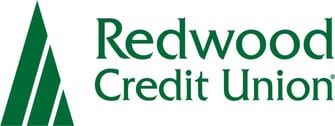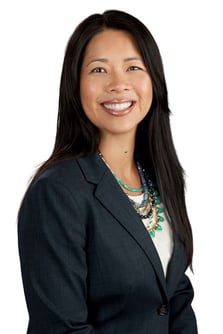
In a Nutshell: Redwood Credit Union has grown from humble origins to serve members across eight northern California counties. Throughout its growth, the credit union has maintained its philosophy of supporting the best interests of its members and communities. It offers products that help underserved communities build credit and introduces them to financial management. Its robust financial literacy services are available to members and nonmembers alike. Redwood Credit Union is also committed to having a financially savvy workforce positioned to guide members to achieve financial well-being.
Redwood trees have an otherworldly quality that inspires a sense of awe in the beholder. Growing up in the eastern portion of the United States, I developed a healthy respect for the great outdoors — mountains, forests, rivers, and lakes. I can still recall the wonder I experienced when, traveling through Northern California, I encountered a Redwood tree for the first time.
I was so taken by the giant tree that I felt compelled to pull my car over and amble around the tree’s trunk for a few minutes. Allowing myself time to appreciate a scenic view isn’t an unusual practice for me, but I can’t recall ever doing so for a tree before my initial Redwood rendezvous.
The majestic Redwood tree can grow to heights exceeding 300 feet. But, like many other trees, they start as a seedling small enough for a child to hold.
Redwood Credit Union (RCU), the largest credit union in California’s North Bay, shares a similar growth trajectory with its namesake tree. In 1950, seven employees working for the County of Sonoma founded RCU. To serve each others’ financial well-being, the employees began placing their money in a shoebox they stashed in their office desk drawer. The employees would lend each other the money from the shoebox as individual funding needs arose.

Since its inception, RCU has grown to serve more than 445,000 members. It has more than $8 billion in assets and 860 employees, and members can visit its 21 branches across six counties.
“We have the same philosophy today that our founders had,” said Matt Martin, RCU’s Senior Vice President of Community and Government Relations. “We support the best interests of our members and communities through compassionate service. We exist to promote financial well-being for all.”
Products That Position Members for Success
Mishel Kaufman, RCU’s Executive Vice President and Chief Administrative and Risk Officer, said the credit union’s key differentiator is its investment strategy. Kaufman said RCU invests in its members by giving back to the organization through technology, product, and service enhancements.
RCU’s credit-builder credit card is a secured card that gives members access to credit limits as low as $200. Kaufman said credit lines can increase as members use their credit-builder cards and build their credit. As their credit scores grow, members may choose to transition to other cards or credit products that may not have been previously available to them.
The credit-builder card is intended for members with bad or no credit scores. But it comes with many similar benefits as those featured on cards designed for experienced credit users, including cash back, merchandise, and travel rewards. It has no annual fee or fees for balance transfers or foreign transactions.

“There are a lot of high-limit, high-interest credit cards out there in the market,” Kaufman said. “And people may not know that there are other options available to them. Our credit-builder credit card can be used as a tool for people seeking better ways to plan, borrow, and spend.”
Direct Access Checking is an introductory deposit product that doesn’t have maintenance or overdraft fees. The account also provides members with a free debit card and access to free online and mobile banking platforms.
“This product gives members an entryway into having a checking account at a financial institution,” Kaufman said. “A lot of people need a safe place to keep their money so that they can make transactions and pay their bills. Direct Access Checking allows them to build healthy financial management habits. Over time, they may wish to transition to a different checking account, but this account is accessible to everyone.”
Financial Education Builds Stronger Communities
Matt Martin said Redwood Credit Union’s commitment to providing financial education is in the credit union’s DNA.
“The purpose of our organization is to inspire hope, one life at a time,” Martin said. “We support our members through good times and bad. Financial education isn’t always taught at the kitchen table or in schools. We want to make sure we’re always getting the necessary information and educational resources out to the community for members and nonmembers alike. As each individual grows in knowledge, the community strengthens.”
RCU partners with BALANCE, a financial education organization, to provide members free access to one-on-one coaching with financial counselors.

RCU offers a free online learning tool that allows members to create personalized-learning playlists on topics that include retirement planning, creating a budget, and exploring how to apply for loans.
Martin said RCU provides hundreds of knowledge-based articles to help individuals learn the building blocks of financial well-being.
RCU employees regularly deliver in-person and virtual financial well-being presentations to the community. It partners with nonprofits, schools, and service organizations across the North Bay and San Francisco to provide financial education.
Martin said the credit union focuses heavily on unbanked and underbanked communities. It teaches them to avoid engaging in financially harmful practices, including applying for loans from predatory lenders.
Demystifying financial literacy can empower people to overcome unexpected obstacles.
“It’s helpful for people to learn day-to-day financial management skills,” Martin explained. “But we also teach individuals topics such as how to navigate natural disasters from a financial perspective. Redwood Credit Union is a financial first responder. It’s critically important to build up financial resilience given the unique challenges which can coincide with events like the 2017 California wildfires.”
A Commitment to Growth and Stability
RCU recently unveiled a financial well-being program for its employees. Martin said the program is systematically and intentionally curated to broaden employees’ financial horizons. It teaches employees the essentials of financial well-being while helping them learn about the copious resources the credit union makes available to its members.
“The program stems from the belief that if we value employees by promoting their financial well-being, then our team members are going to be more apt to advance the financial well-being of our members and provide guidance to them,” Martin said. “The first wave of employees has completed the training, and the feedback has been very positive. One employee even said it was a life-changing experience.”

Kaufman said RCU is continuing to grow to best serve its members. It recently opened a facility that houses 500 employees. RCU is planning to open additional branches in the near future to increase convenience for its members.
RCU has launched a new mobile and online banking platform. Kaufman said the product includes features that make it easier for members to set savings goals and analyze their spending habits. Members can also access their FICO score, manage credit card rewards, and redeem rewards from the new platform.
“The new online and mobile banking platform is a significant upgrade,” Kaufman said. “Our long-term strategy and a part of our core business model is using our resources to responsibly invest in technology, products, and services that will benefit our members and community. It all points back to how the credit union started in 1950 with employees lending out money from a shoebox. Now, it’s just a bigger shoebox.”






